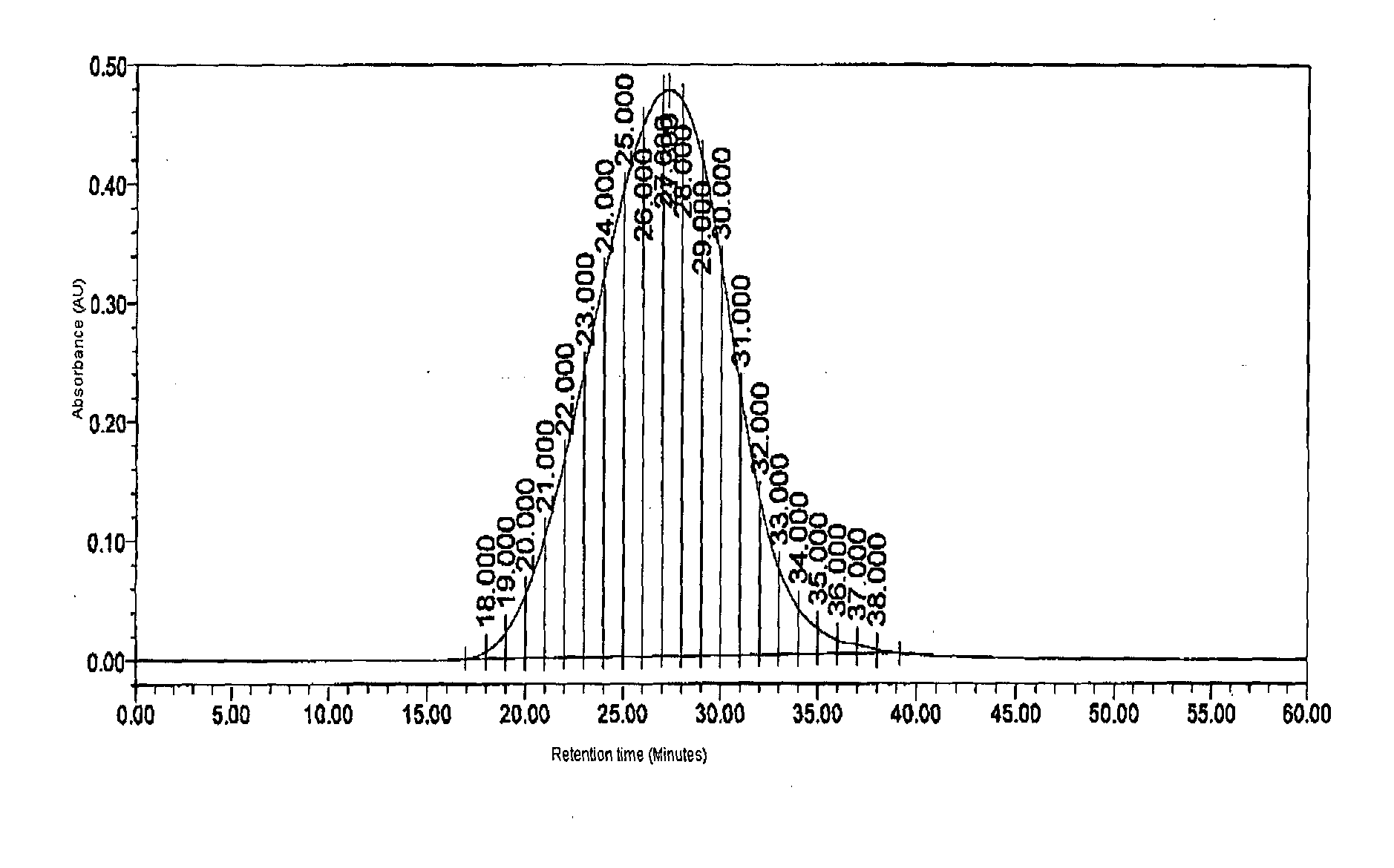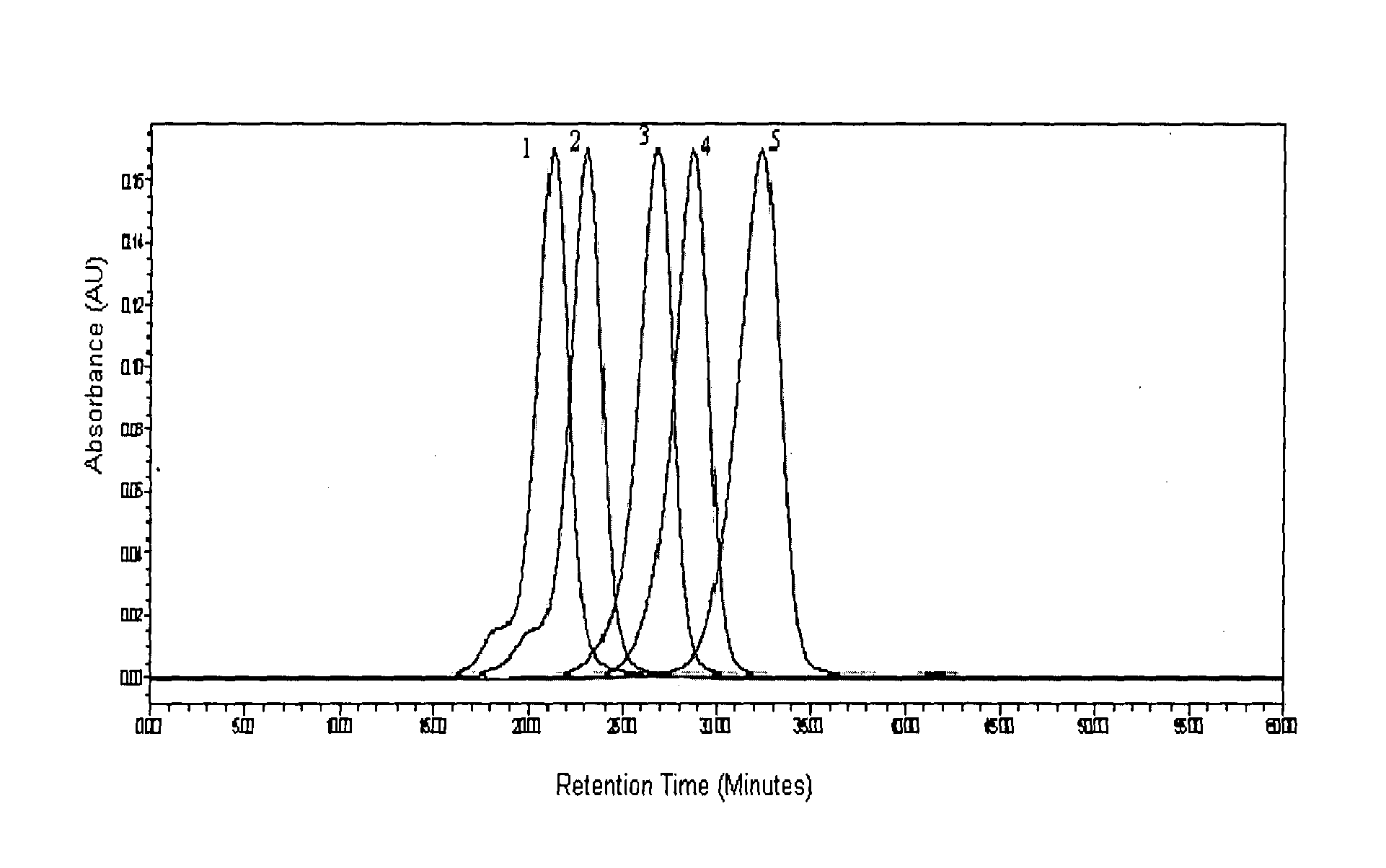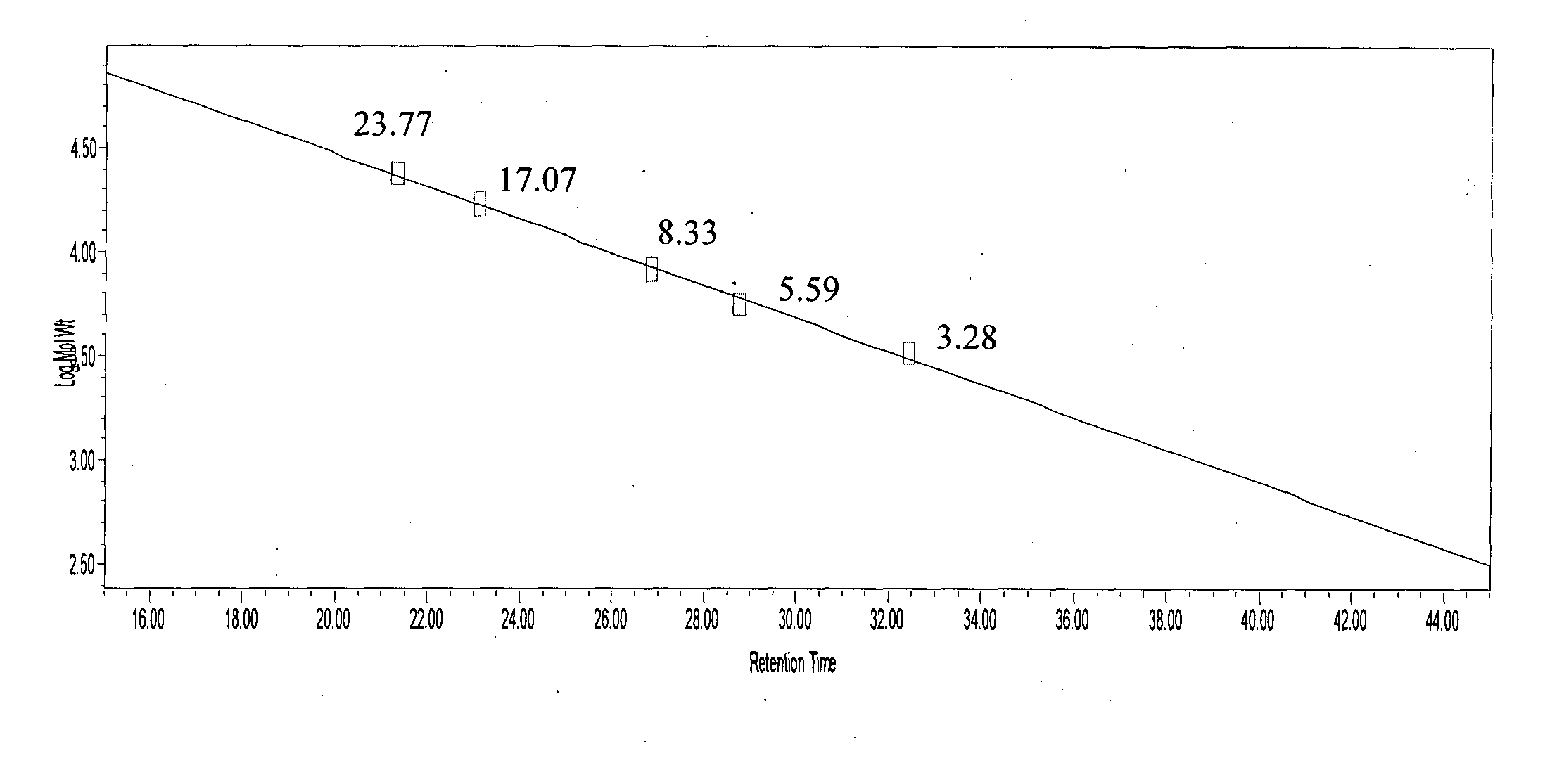Copolymer-1, process for preparation and analytical methods thereof
a technology of glatiramer acetate and process, applied in the field of analytical methods, can solve the problems of slow reaction speed, increase production cost, and reduce the quality and yield of desired products, and achieve the effect of saving considerable tim
- Summary
- Abstract
- Description
- Claims
- Application Information
AI Technical Summary
Benefits of technology
Problems solved by technology
Method used
Image
Examples
example 1 (
Example 1(B)
Molecular Weight Determination of Glatiramer Acetate Batches
a) Fractionation of Glatiramer Acetate Obtained by the Process of the Present Invention:
[0234]Glatiramer acetate about 40 mg was subjected to GPC on a Superose 12 (10 / 300 GL), System: Acta purifier using 0.2M Ammonium acetate pH 5.0 as mobile phase, at a flow rate of 0.5 ml / min.[0235]Glatiramer peak started eluting after about 20 min and ended after about 40 min.[0236]30 individual fractions were collected within an interval gap of 0.5 minute (FIG. 5) starting from the 21st minute and ending at about 41st min.[0237]Around 15 fractions were analyzed for polydispersity and molecular weight.[0238]Fractions were selected in such a way that one of these fractions represents the peak apex molecular weight and other fractions were distributed on either side of the peak apex molecular weight.[0239]Fractions having polydispersity of less than 1.2 were selected and lyophilized.[0240]Fractions having polydispersity of more...
example 2
[0250]200 g (0.84 moles) of γ-benzyl L-glutamate and 10 g of activated charcoal were suspended in 2.4 L of tetrahydrofuran (THF). 124.6 g (0.42 moles) of triphosgene was added to the obtained mixture and stirred for 0.5 hr at 50-55° C. After the completion of reaction, the reaction mixture was cooled to room temperature, filtered through hyflo bed and nitrogen gas was purged through the obtained filtrate for 2 hr below 35° C. The filtrate was concentrated under vacuum to get an oil. The obtained oil was stripped thrice with 1 L of hexane to get the solid. The obtained solid was stirred with 2 L hexane, filtered, washed with 2 L hexane and dried under vacuum at below 45° C. The dried material was passed through 30 mesh and again re-dried. The re-dried solid was stored at −20° C. in a air-tight container.
[0251]Yield: 200 g (100% w / w w.r.t. amino acid), m.p: 92°-94° C.
example 3
[0252]110 g (0.552 moles) of L-tyrosine and activated charcoal (5.5 g) were suspended in 1.32 L of tetrahydrofuran (THF). 89.76 g (0.302 moles) of triphosgene was added to it. The reaction mixture was stirred for 2 hr at 50-55° C. After the completion of reaction, the reaction mixture was cooled to room temperature, filtered through hyflo bed. Nitrogen gas was purged through the obtained filtrate for 2 hr below 35° C. The reaction mixture was then concentrated under vacuum to get a solid mass. The obtained solid mass was stripped thrice with 0.55 L hexane and further stirred with 1.1 L hexane, filtered, washed with 1.1 L hexane and dried under vacuum below 45° C. The dried material was passed through 30 mesh and again re-dried. The re-dried solid was stored at −20° C. in a air-tight container.
[0253]Yield: 80 g (73% w / w w.r.t. amino acid). The compound decomposed at 250° C. to 270° C.
PUM
| Property | Measurement | Unit |
|---|---|---|
| polydispersity | aaaaa | aaaaa |
| flow rate | aaaaa | aaaaa |
| molecular weight | aaaaa | aaaaa |
Abstract
Description
Claims
Application Information
 Login to View More
Login to View More - R&D
- Intellectual Property
- Life Sciences
- Materials
- Tech Scout
- Unparalleled Data Quality
- Higher Quality Content
- 60% Fewer Hallucinations
Browse by: Latest US Patents, China's latest patents, Technical Efficacy Thesaurus, Application Domain, Technology Topic, Popular Technical Reports.
© 2025 PatSnap. All rights reserved.Legal|Privacy policy|Modern Slavery Act Transparency Statement|Sitemap|About US| Contact US: help@patsnap.com



